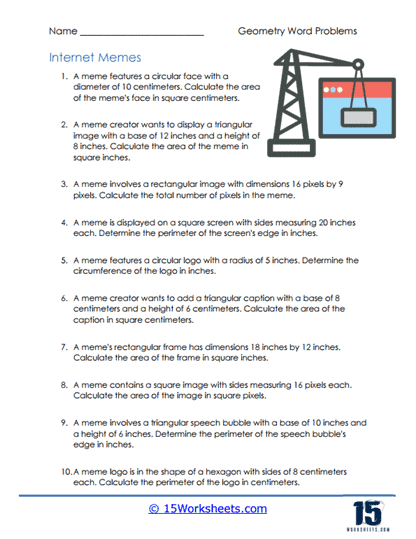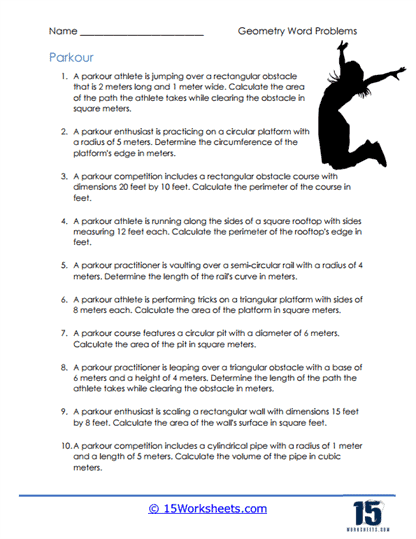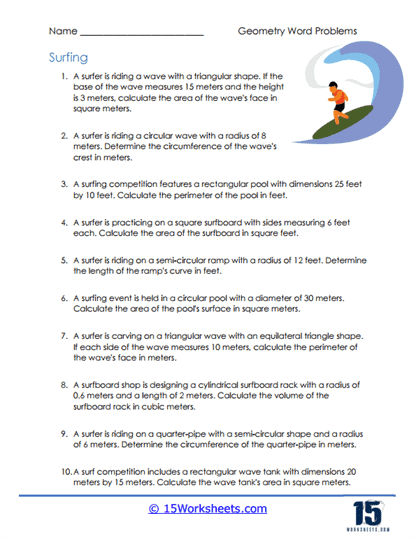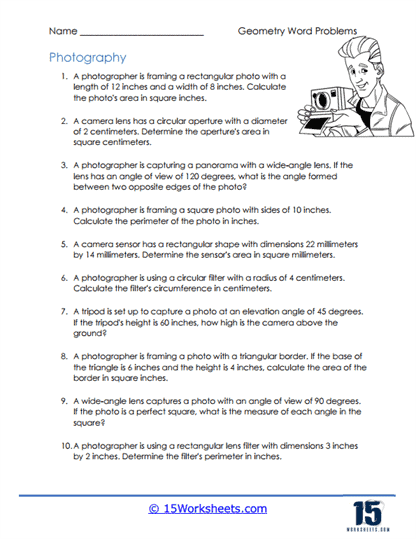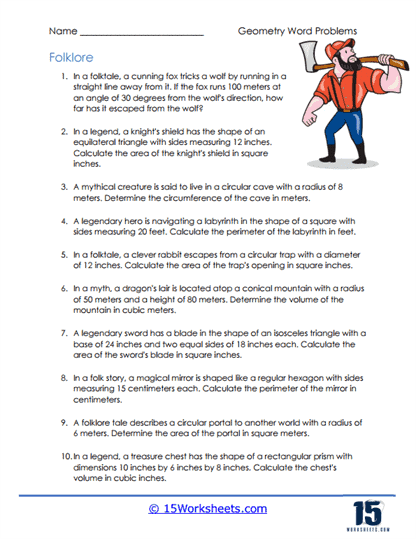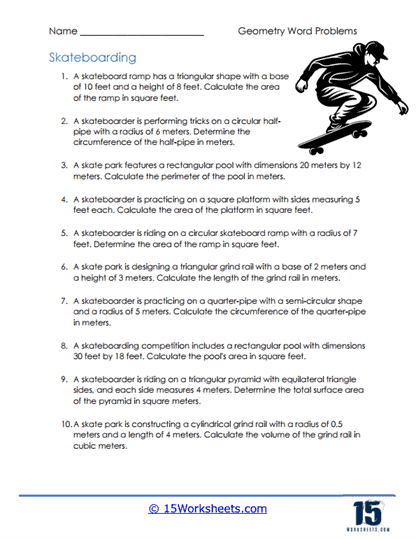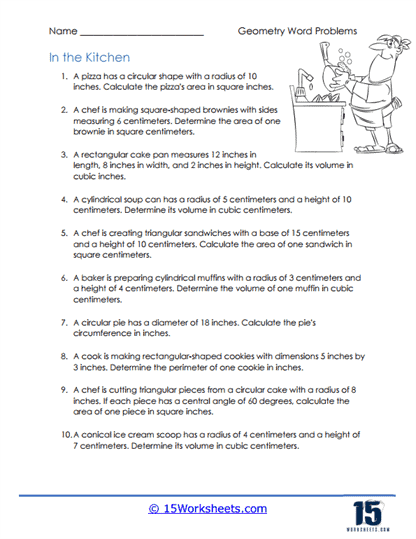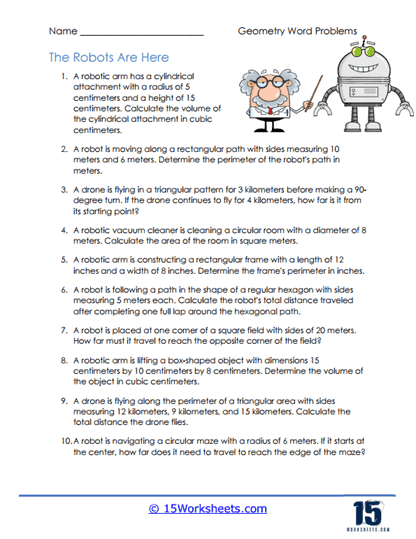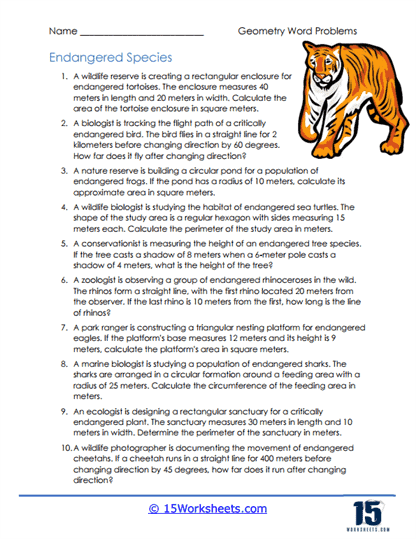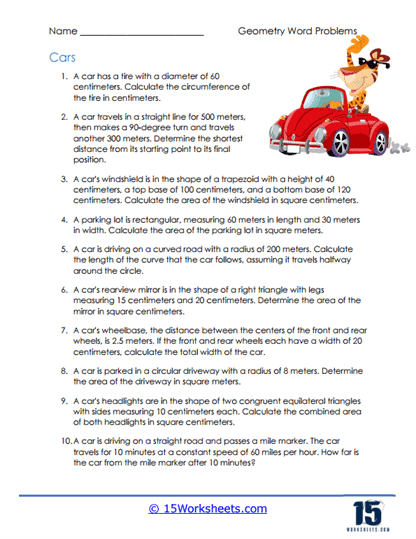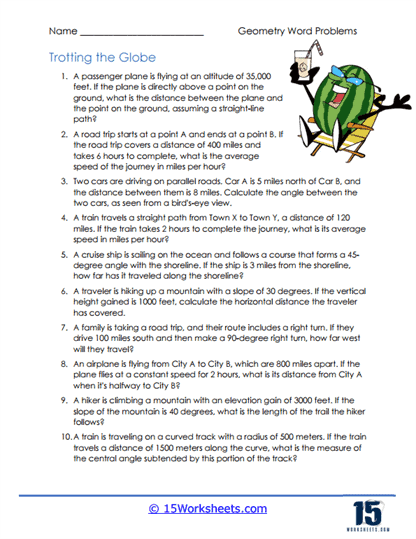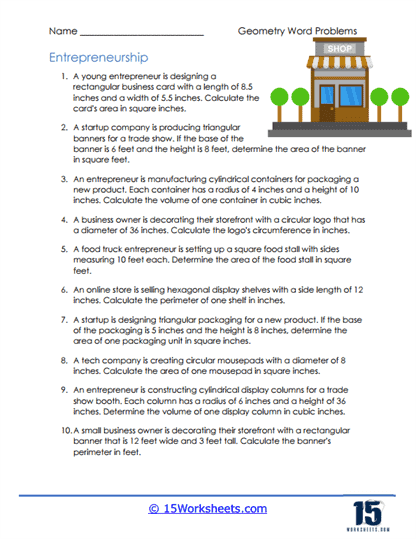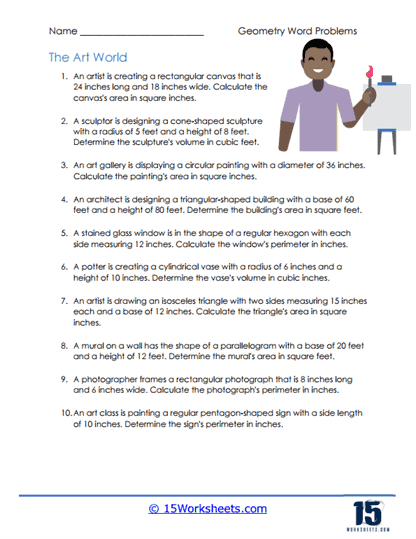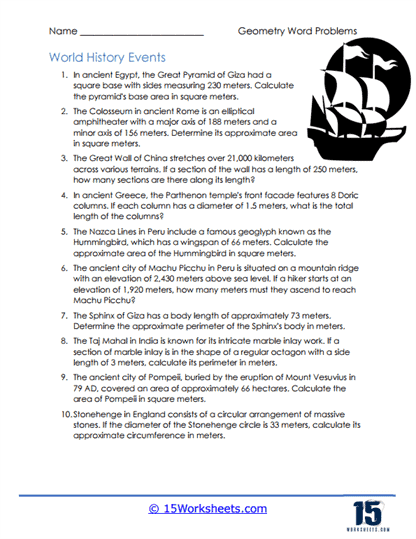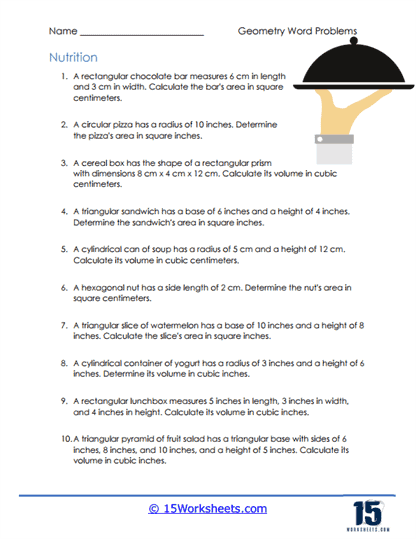Geometry Word Problems Worksheets
About These 15 Worksheets
Our geometry word problem worksheets are sheets that are filled with questions that challenge you to apply your knowledge of geometry to real-life or hypothetical situations. Instead of just asking you straightforward questions like “What’s the area of a rectangle that’s 5 units by 7 units?”, these problems make you think more deeply. They might say something like, “Jill wants to buy a rug for her room. If her room is 5 units by 7 units, how big should the rug be?”
These types of worksheets will help students see the connection between shapes, space, and the real world. These problems encourage students to think, reason, and apply their knowledge, building a foundation for more advanced math and understanding the world around them.
By working through fraction word problem worksheets, students not only gain proficiency in fraction arithmetic but also enhance their problem-solving skills and mathematical reasoning. They learn to apply fraction concepts to real-life contexts, improving their ability to make informed decisions and solve practical problems involving fractional values. Fraction word problems also help students develop the communication skills necessary to articulate their solutions clearly and concisely.
Fraction word problem worksheets are a valuable component of mathematics education, as they provide a bridge between abstract mathematical concepts and their practical applications. They make fractions more relatable and relevant to students, demonstrating the utility of fractions in everyday life. These worksheets can be used in the classroom to reinforce lessons, as homework assignments, or as part of standardized test preparation to ensure students have a strong foundation in fraction-related skills.
Types of Problems on these Worksheets
Area and Perimeter Problems – These problems might ask about the space inside a shape (area) or the distance around it (perimeter). For example, finding out how much grass is needed for a garden or how much fencing to buy.
Volume Problems – These involve 3D shapes like cubes, cylinders, and spheres. You might have to figure out how much water a tank can hold or how many candies fit in a box.
Angle Problems – You could be asked about the angles of shapes or those created when two lines cross. For example, finding the angle between the hour and minute hands of a clock.
Pythagorean Theorem Problems – For right-angled triangles, these problems will ask you to find the length of one side if you know the other two. Think of it as a detective solving a triangle mystery!
Transformation Problems – These are about shapes moving—sliding (translation), flipping (reflection), turning (rotation), or resizing (dilation).
Coordinate Geometry Problems – Here, you’ll work with points on a grid, figuring out distances between them or understanding the shapes they form.
Why is this Skill Important?
Critical Thinking – Geometry word problems train your brain to think critically and logically. You’ll learn to read carefully, pick out important details, and use your geometry knowledge to solve them.
Real-World Application – By practicing these problems, you understand how geometry is everywhere around us—from the buildings we live in to the smartphone screens we swipe.
Foundation for Advanced Math – As you progress in school, math problems get more complex. Having a strong grasp on geometry will make it easier to tackle tougher subjects like algebra, trigonometry, and calculus.
Using Geometry in Daily Life
Home Improvement – Want to paint your room or lay down a new carpet? You’ll need to know the area to buy the right amount of paint or carpeting.
Cooking – Ever wonder how much cake batter you need for different sized pans? That’s geometry!
Sports – Think about a basketball player estimating the angle to make a perfect shot or a golfer deciding which path to take to avoid a sand trap.
Examples of Geometry Word Problems
Example 1 – Area and Perimeter
Sarah wants to plant flowers around the border of her rectangular garden, which is 10 feet long and 6 feet wide. If one flower requires 1 foot of space, how many flowers can she plant?
Solution
Find the perimeter – P = 2l + 2w = 2(10) + 2(6) = 20 + 12 = 32 feet.
Number of flowers = Perimeter of the garden = 32 flowers.
Example 2 – Using Pythagorean Theorem
On a baseball diamond, the distance between each base (forming a square) is 90 feet. How far does a player have to throw the ball diagonally from home plate to second base?
Solution
Using the Pythagorean Theorem – c2 = a2 + b2 (where c is the diagonal).
Since a = b = 90 feet – c2 = 902 + 902 = 8100 + 8100 = 16,200.
Taking the square root – c = 127.28 feet.

